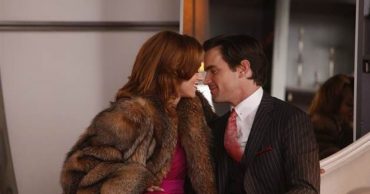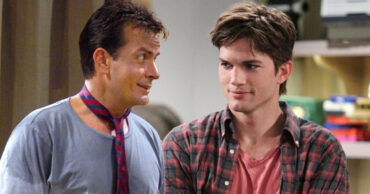Mad Men might have wrapped up in 2015, but it’s still considered one of the greatest shows because it has survived the test of time so well! Right from its debut in 2007, it was a hit among critics and audiences alike. Since then, it’s gone on to win 79 awards, including 16 Primetime Emmys and 5 Golden Globes! While other shows at the time focused more on reworking existing TV genres — the cop drama (The Wire), the mob movie (The Sopranos) — Mad Men kind of created its own subgenre: a period antihero/workplace drama about the cultural history of branding.
Plus, it came at just the right time, when branding was moving away from being simply the purview of giant corporations, to a practice that even everyday people had to participate in. The gig economy, social media, and smartphone cameras all made the ability to sell yourself, or an idea of yourself, absolutely essential. But there’s more to Mad Men’s success than just its historical setting or lucky timing. Even almost a decade after its finale, new and old fans keep coming back to the series. So, let’s break down the four main reasons why Mad Men is such a timeless classic and continues to resonate with audiences.
1. The Character Development in Mad Men Remains Unprecedented

The biggest strength of Mad Men is undoubtedly the way its characters are written. From Don (Jon Hamm) to Roger (John Slattery), Pete (Vincent Kartheiser), Joan (Christina Hendricks), and Peggy (Elisabeth Moss), we’ve come to know and understand every character intimately. And unlike most other shows, the characters aren’t simply good or bad; they’re all in a morally ambiguous gray area. Some characters seem super cool, like Don, but that doesn’t mean you want to be them. Others, like Pete, may come off as downright vicious but that doesn’t mean they were born that way.
Over seven seasons, we see these characters at their best and their most pathetic. And the show assures us that both experiences are part of life. Plus, all characters, both lead and supporting, grow uniformly, and nothing ever seems forced.
Take Joan, for example. She starts off as the picture-perfect ‘60s woman — beautiful, charming, and a homemaker in waiting. You can just tell she’s biding her time until that special someone offers her a ring and she never has to work another day in her life. But by the end, she’s transformed into a confident feminist who’s actually denied men the chance to take care of her because she wants to be an independent woman. This is just one example of how the characters in Mad Men grow and change over time, and it brings us to our next point…
2. Its Ability to Weigh in on Themes of Masculinity and Femininity in Historical Context

Mad Men doesn’t just recreate the look and feel of the 1960s; it perfectly captures the prevalent customs of the urban American society at the time. One big thing it dives into is how people used to see masculinity and femininity. Back in the ‘60s, things were different for women. They carried themselves differently, spoke differently, expressed opinions differently — and Mad Men catches it all, right down to the T. The series also (blatantly and unapologetically) showcases the white male privilege that was so pervasive during that era. We see how characters like Peggy and Joan constantly have to fight for recognition in a male-dominated advertising industry.
But it’s not just about the women. Mad Men also gives us a very nuanced look into masculinity, which is quite uncommon in today’s era. We see how Don struggles to live up to the ideal of the strong, silent provider that society expects him to be. And then, as the decade progresses, the show also explores how these ideas about gender start to change. Take Roger, for example. We get to see the world moving away from the “playboy” ideal and how Roger struggles to maintain his relevance in a world that no longer values his brand of masculinity.
3. Mad Men Depicted the Complexity of Human Relationships With Transparency

Although the show takes place over 50 years ago, it still feels relatable. That’s because, at its core, Mad Men is all about people and their relationships. Other shows have crime, murder, time travel, or alternate universes (we’re looking at you, Lost) to help drive the plot, Mad Men has adultery and a person’s foot getting run over by a lawnmower.
And Mad Men doesn’t sugarcoat love, friendship, or family. It depicts a brutally honest reflection of how messy and complicated these relationships can be, but also how vital they are to our lives. Take Don’s marriages, for example. His constant need to reinvent himself and his inability to be emotionally honest lead to a cycle of heartbreak for both him and his wives. This isn’t some idealized Hollywood marriage — it’s a raw portrayal of how emotional baggage and unaddressed issues can poison even the most promising relationships.
Similarly, Peggy’s complicated relationship with her mother shows how family isn’t always a good thing, particularly when faced with societal expectations and unspoken resentments. Mad Men doesn’t offer easy answers or happily-ever-afters. This raw portrayal of human connection is what makes Mad Men so relatable, even decades after its final episode.
4. Visual Storytelling and Aesthetic Precision Was Spot On

Mad Men is a meticulously crafted time capsule. Every detail, from the clothes characters wear to the cigarettes they smoke, is a spot-on recreation of the 1960s. The attention to detail is astonishing, right down to the size of the coffee and teacups. Unlike today’s oversized mugs, the cups in Mad Men are tiny, usually only about 6 oz. The general manager of AMC revealed that during a break in filming, he found files and memos in Don’s office desks that were printed with the ad agency’s letterhead. These were papers that would never be seen by the audience, yet they remained accurate and completely in touch with the setting of the series
Mad Men also demonstrates the effectiveness of visual storytelling. For example, in Season 4, Episode 7, “The Suitcase,” Don and Peggy are working on a pitch for a suitcase. During their brainstorming session, Don sees an apparition of Anna (Melinda Page Hamilton) walking out the door with the suitcase, which symbolizes how she’s just died.
Another great example of it comes in Season 1, Episode 13, “The Wheel.” Betty’s (January Jones) friend, Francine discovers that her husband is cheating and comes to Betty for help, implying that Don is also unfaithful. She thinks Betty would know how to deal with it. Later, Betty goes through Don’s phone bill and realizes Don is, in fact, cheating on her. When Don comes home, Betty talks about Francine, but really, we know that she’s interrogating him about his own infidelity. By the end of the scene, Betty has essentially confirmed her suspicions and confronted Don — all without a single accusation spoken aloud. This masterful use of subtext and visual storytelling is what sets Mad Men apart from other similar TV shows. Check out these awesome TV shows that pack the same punch as Mad Men.
 Follow Us
Follow Us





